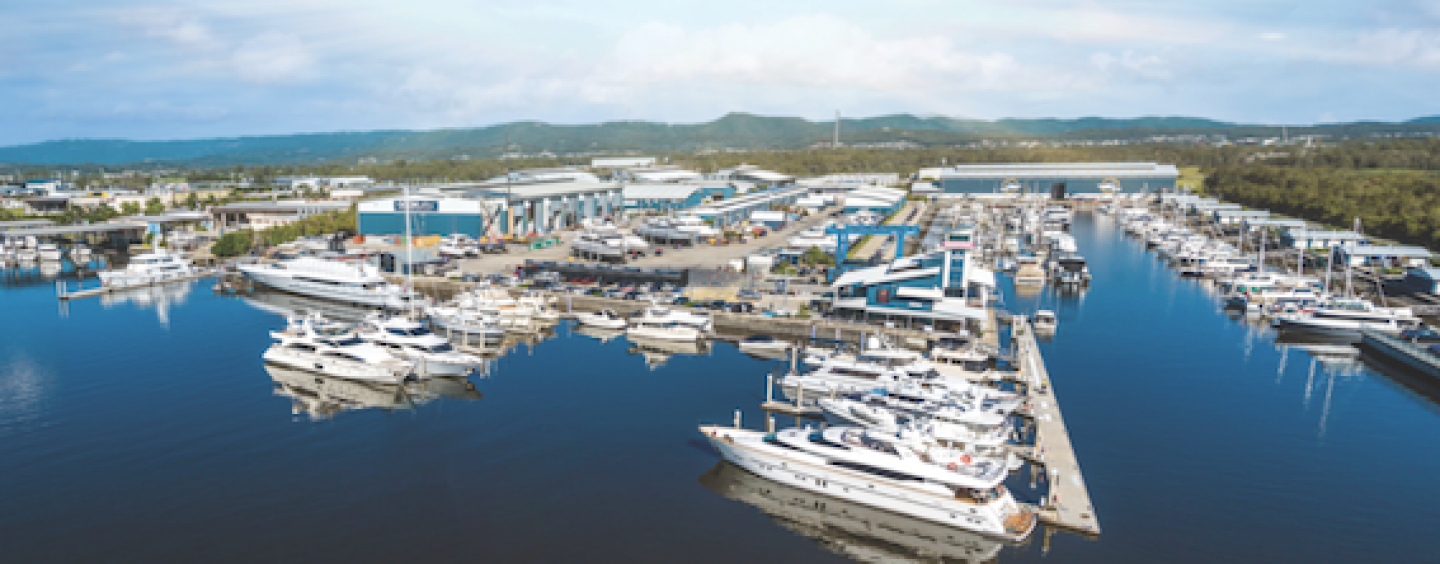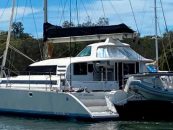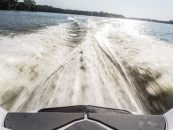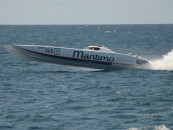In January 2020, Gold Coast City Marina and Shipyard (GCCM) entered its 20th year of operation. With the benefit of both time and experience – the team estimates they have lifted over 100,000 boats in that time – the facility has seen every conceivable type of boat and witnessed numerous boating trends, the latest of which is the renaissance in wooden boats and a return to traditional boat-building methods.
The new year has started with a flurry of activity at GCCM and, among the many vessels accessing the yard for their maintenance or repair work, were two very special wooden boats, two very different boats yet both notable for their own reasons: S/V Notorious and M/V Banyandah.
Here are the stories behind these magnificent examples of boat building prowess and how they came to be at GCCM.
S/V NOTORIOUS: LIVING MARITIME HISTORY
S/V Notorious is certainly a head-turner and there would be few who cruise the east coast of Australia who have not seen this remarkable yacht before. However, there is a great deal of urban myth and mystery that surrounds this 17.5 metre full-size, wooden, sailing Portuguese or Spanish caravel from the Age of Discovery. We sat down with co-owner, Felicite, to learn more about this striking vessel.
The caravel ships date back to the 15th century and were the vessels that carried the Europeans discovering the New World. There is significant evidence that the places visited by these vessels included Australia. In the 1800s, two shipwrecked sealers came across a wreck on the Victorian coastline near Warrnambool. Nicknamed the ‘Mahogany Ship’, it is widely accepted to be a Portuguese caravel ship, although the last known sighting was in 1886.
Skip ahead over two centuries, and Graeme and Felicite were within a stone’s throw of the original wreck and considering what to do with 300
tonnes of reclaimed Monterey Cyprus (Cupressus macrocarpa) they held, remnants of their successful custom furniture business. With a sailing history, an inquisitive mind, and inspired by the legend of the ‘Mahogany Ship’, he settled on the caravel.
Graeme then researched, designed and single-handedly built the ship. Notorious is unique, as it is the only caravel sailing in the Southern Hemisphere; is Australia’s earliest ship reconstruction; and the only lateen-rigged ship in the country. Graeme’s outstanding achievement is there are no caravel design plans nor an archaeological find from which he could learn. He had to rely on historical documents and paintings. In 2002, Graeme laid the keel. Technically speaking, the keel is reclaimed ironbark and the topside and structure from Monterey Cypress. She is traditionally caulked, and her black appearance is the result of a specific oil mixture to maintain the timbers.
Since her launch in 2011, Felicite and Graeme have clocked over 20,000 nautical miles in the Southern Ocean, Bass Strait, and the Tasman and Coral Seas; stopping at 40 ports, between Portland in Victoria, Hobart and Port Douglas, opening the ship for public inspection. Contrary to urban myth, the boat was not used for the Pirates of the Caribbean film, and is so many times the case, the truth is even more intriguing than the fiction.
In 2014, they made their first trip to GCCM to undertake a meticulous maintenance regime, which included an annual lifting to check the corking, reapply antifoul, oil the topsides plus complete a service of the 671 Detroit Diesel engine.
“We are very happy to haul out at GCCM. We have just returned for our fifth lift at GCCM where we were most welcome. The lift team and service provided by GCCM is exemplary. Travis and his team take great care with lifting and placing our ship on the hardstand, and returning her to the water,” offered Felicite.
Safely back in the water, Felicite and Graeme are looking forward to continuing their cruising and open-ship schedule. While they have cruised to some of the most remote cruising destinations, they still enjoy cruising the Broadwater.
“Congratulations Graeme and Felicite in keeping alive a little-known part of Australia’s nautical history. We look forward to seeing you next year,” stated GCCM’s CEO and original developer, Mr Trenton Gay.
M/V BANYANDAH: MOTHERSHIP FOR THE REGATTAS
While Notorious was departing, another wooden boat was quietly arriving at GCCM. Although they both rely on the oldest boat-building material for their construction, the similarities stop there.
M/V Banyandah was launched in 1978 in Brisbane, built by Keith Everingham. She is a simple construction of plywood-designed perfection for Southeast Queensland cruising – a perfect example of a Bay Cruiser powered by a single Ford Lees. Six months ago, her original build owner finally parted with her, selling the boat to Graham Sherring.
Graham is a competitive sailor and a sail maker. His loft, Evolution Sails, is based on the Gold Coast. His plan is to use Banyandah as a mothership during the various regattas in which he sails in Brisbane, towing his competitive sailing boat to the regatta then using her ample accommodations for much needed rest in the evening. Fittingly, Banyandah is the Indigenous word for ‘home on the water’. Aside from her mother shipping duties, Graham’s plan is to head north next year and he needs the boat ready for the journey.
The boat was a solid construction, and not much was needed to be done. However, with age comes repairs, and Graham wanted someone he trusted, who had knowledge and appreciation of the wooden boat to complete the job. He turned to Craig Fielding, owner of Lighthouse Shipwrights at GCCM.
Craig and his team have built quite the reputation with wooden boats, leaning on their traditional boat-building skills. It is a skill set honed by the current revival in the area. GCCM lifts on average four wooden boats a week, some which were originally launched at the start of the 20th century through to modern-day wooden boats.
“When we were scoping the works, Craig spent two and half hours going over the boat. His attention to detail was extraordinary and gave us enormous confidence in him. It was clear he knew a great deal about the history of the boat and what needed to be done. Now the project has begun, I don’t feel the need to check in. I trust she is in good hands,” said Graham.
Over four weeks, while safely housed in a GCCM refit shed, the Lighthouse Shipwright team made much needed repair to the deck beams without undertaking a full deck reconstruction. They repainted the decks and some of the trim. Paint is a hugely important factor in wooden boat management as Craig explained.
“This project is relatively easy as the timber from the original construction is pretty stable. We used a 2-pack polyurethane from Awlgrip for the deck with a non-skid element. It is also an economical option for this boat. For boats with less stable timbers, we use an enamel paint as it is flexible. Each boat is different, and it is a matter of getting to know the boat, and the owner before making any recommendations on paint.”
Two very different vessels and two very different projects – yet it is clear that both owners were seeking and found a yard and contractors equally passionate about their boats. “You would think, after two decades, we would have seen it all. However,
I am still intrigued and excited to see the variety of boats that come to us. I guess that is part of our success; we never tire of this. It is more than a job – it is our passion and our pleasure,” explained Trent.
Published in the April – June 2020 edition.






























